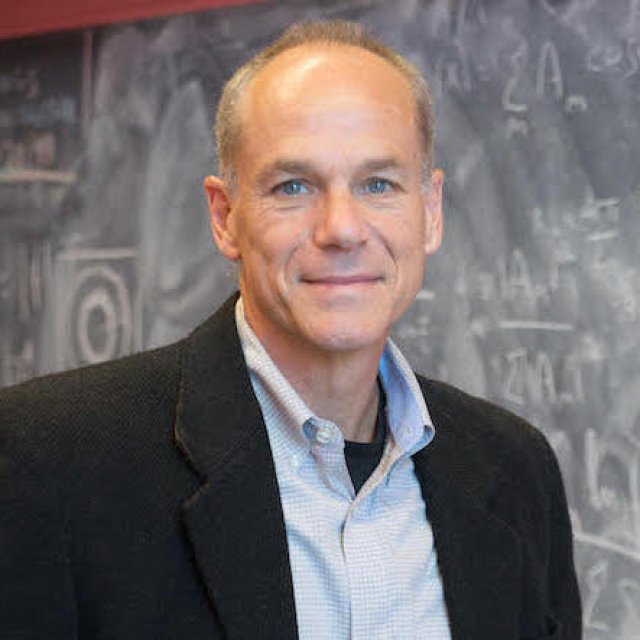CAN QUANTUM PHYSICS, NEUROSCIENCE
MERGE AS QUANTUM CONSCIOUSNESS?
by Physicist Marcelo Gleiser
November 28, 2021
Physicist and astronomer Marcelo Gleiser offers some thoughts as to the light that quantum mechanics — as opposed to classical physics — can shed on consciousness. The problem, he thinks, is that both quantum mechanics and consciousness are mysteries. Adding two mysteries together doesn’t produce simple answers:
The truth is that despite the tremendous success of quantum physics when it comes to its applications — the digital and nuclear technologies that define much of modern life — its interpretation remains uncertain, a target of heated debate among physicists. We know how to use quantum physics, but we do not know what it is telling us about the nature of reality. - MARCELO GLEISER, “CAN QUANTUM MECHANICS EXPLAIN CONSCIOUSNESS?” AT BIG THINK (NOVEMBER 24, 2021)
 |
| Marcelo Gleiser |
It’s the same with the brain and the mind:
In a nutshell, the issue here is that tagging neuronal activity is the easy part of the task. The hard part is understanding how active neurons conspire to create the sense of who we are — that is, translating bioelectrical activity and blood flow into self-awareness. - MARCELO GLEISER, “CAN QUANTUM MECHANICS EXPLAIN CONSCIOUSNESS?” AT BIG THINK (NOVEMBER 24, 2021)
Indeed. For example, in a recent discussion, neuropsychologist Mark Solms and neurosurgeon Michael Egnor agreed that, while neuroscientists tend to see the prefrontal cortex of the human brain as the seat of consciousness, clinical experience points to portions of the brain stem. But where does that leave us? Vertebrates of widely varying degrees of intelligence or self-awareness have brain stems.
Physicist (and Nobelist) Roger Penrose and anaesthesiologist Stuart Hameroff offer a model of consciousness from quantum mechanics: Gleiser poses it as a question, “Could thoughts exist in some sort of quantum superposition in an unconscious level only to become conscious when there is a specific selection — akin to a measurement of the electron’s position?” (explained in detail here). They see the protein tubulin, which forms the microtubules that make up the skeleton of neurons as a enabling the entangled quantum states the force a choice.
He also hat tips Giulio Tononi and Christof Koch’s Integrated Information Theory (IIT), which likewise incorporates “quantum vibrations in microtubules.” Quantum entanglement between electrons in the neurons might mean that contact can be maintained over considerable distances because two entagled particle will act together even when separated.
Sharp criticism of these hypotheses, he notes, includes the concern that the brain is too “busy and warm” (Max Tegmark) for anything but classical physics.
That said, we can be fairly certain that classical physics doesn’t account for consciousness either. Gleiser suggests that there co-operation between quantum and classical physics, depending on the level, may be part of the explanation. Then he closes with an interesting admission:
Whatever the resolution may be, we still do not know how to avoid the arguments from the Mysterians. The nature of consciousness could be one of those “unknowables” that many people will find very hard to live with. I, for one, embrace it. This unknowability may well be what will rescue what is left of our humanity from the unstoppable mechanization and objectification of modern existence. - MARCELO GLEISER, “CAN QUANTUM MECHANICS EXPLAIN CONSCIOUSNESS?” AT BIG THINK (NOVEMBER 24, 2021)
By the Mysterians, he means philosophers like Thomas Nagel (what is it like to be a bat?), Colin McGinn (“we are not equipped to understand the workings of conciousness, despite its objective naturalness”) and David Chalmers (the Hard Problem of Consciousness). They argue that “although we know that the conscious mind is nothing more than the brain, it is simply beyond the conceptual apparatus of human beings to understand how this can be the case.” (Britannica)
Such an answer raises further questions: If “the conscious mind is nothing more than the brain,” then we won’t understand it. to understand it, we must look beneath it and there is nothing beneath it.
But how do we know that? We don’t, actually. All we know is that efforts to understand the mind as merely what the brain does have not proven useful.
If we assume that the mind is not merely what the brain does, we have some reasonable hope of understanding it further. That’s where quantum physics may shed some light. It may provide, for example, a point of intersection between mind and brain — but there is no reason to think that that’s a full answer.
---
*You may also wish to read: Does science disprove free will? A physicist says no. Marcelo Gleiser notes that the mind is not a solar system with strict deterministic laws. Apart from simple laws governing neurons, we have no clue what laws the mind follows, though it does show complex nonlinear dynamics. (Michael Egnor)

No comments:
Post a Comment